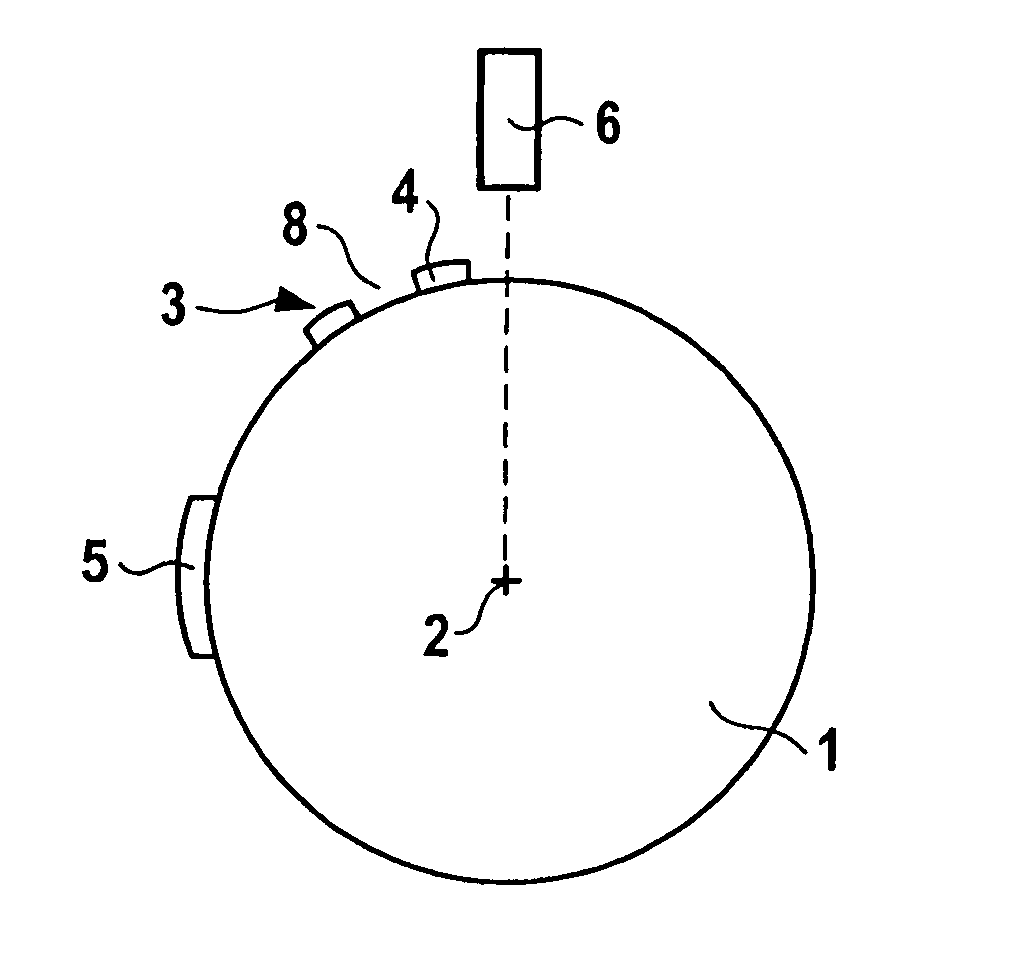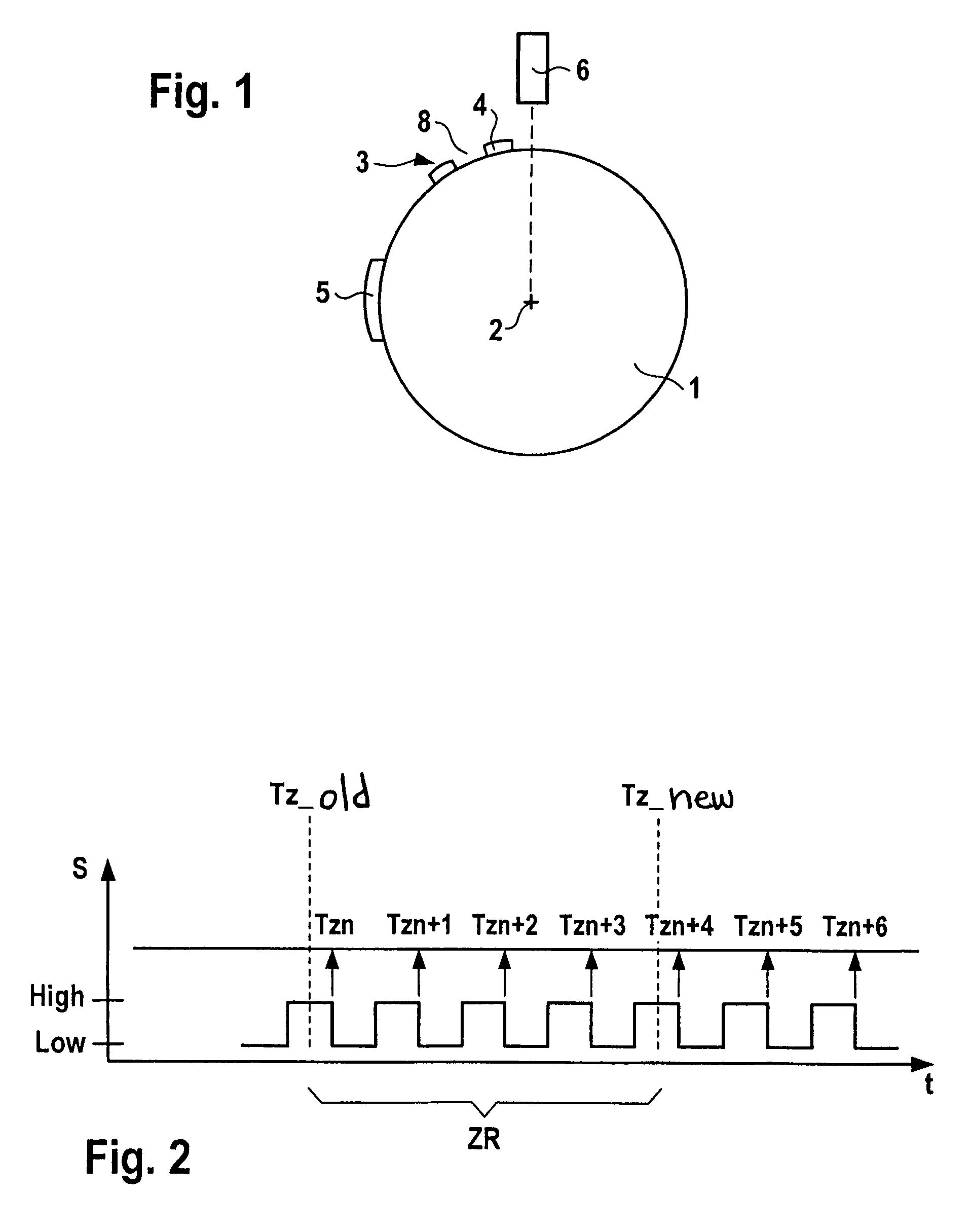Method for measuring the rotational speed of a crankshaft
a technology of crankshaft and rotational speed, which is applied in the direction of instruments, electrical control, force/torque/work measurement apparatus, etc., can solve the problems of weak averaging in this range, and achieve the effect of reducing the difficulty of adjusting the calculation, and improving the accuracy of the calculation
- Summary
- Abstract
- Description
- Claims
- Application Information
AI Technical Summary
Benefits of technology
Problems solved by technology
Method used
Image
Examples
Embodiment Construction
[0016]FIG. 1 shows a diagram of a sensor disk 1 which, for example, is situated directly on a crankshaft or a camshaft or is indirectly connected to the crankshaft or camshaft via transmission elements with regard to the rotation. Sensor disk 1 rotates around an axis2. Markings 3 are situated on the outer circumference of sensor disk 1. The markings are composed of teeth 4, for example, which are each situated equidistant over the outer circumference of sensor disk 1. Tooth spaces 8 are situated between teeth 4. An additional marking 5, e.g., as shown here in the form of a double-width tooth 4 or in form of a larger tooth space between teeth 4 or the like, marks a designated zero position of the crankshaft or camshaft. A sensor 6 is situated on sensor disk 1.
[0017]During a rotation of the camshaft and thus sensor disk 1, teeth 4 and marking 5 are moved past sensor 6, thereby triggering an electrical signal in sensor 6, for example. Sensor 6 may be an inductive, a capacitive, or a Ha...
PUM
 Login to View More
Login to View More Abstract
Description
Claims
Application Information
 Login to View More
Login to View More - R&D
- Intellectual Property
- Life Sciences
- Materials
- Tech Scout
- Unparalleled Data Quality
- Higher Quality Content
- 60% Fewer Hallucinations
Browse by: Latest US Patents, China's latest patents, Technical Efficacy Thesaurus, Application Domain, Technology Topic, Popular Technical Reports.
© 2025 PatSnap. All rights reserved.Legal|Privacy policy|Modern Slavery Act Transparency Statement|Sitemap|About US| Contact US: help@patsnap.com


